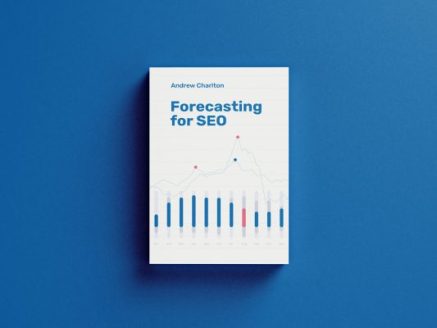Andrew Charlton – Forecasting For SEO Download

Join over +200 SEOs.
SEO Forecasting is an expectation.
Before businesses invest in SEO, they want to know what they’re getting for their money.
The pressure for businesses to be data-driven means it’s more important than ever to be accountable for your SEO performance.
And it’s rewarding.
Being able to reliably forecast SEO performance can:
- Win you more clients.
- Increase investment into SEO.
- Challenge unrealistic business targets.
But with so many unknowns – algorithm updates, implementation issues and economic challenges – how can you possibly predict the future?
It’s possible. I’ll show you how to embrace this uncertainty.
Introducing Forecasting For SEO.
Who am I?
I’m Andrew Charlton and I’ve been working in SEO for over 10 years.
I’ve successful led agency teams, and consulted on some of the largest brands in the UK.
Some of that time I spent as a forecasting sceptic. I always thought it was impossible to project SEO performance.
But like SEO, the same mysterious complexity drew me to forecasting. And the more I learned about it, the more I understood and valued it.
So much so, I now build forecasts for many SEO agencies and businesses across the world with FutureThought.
I want to share everything I’ve learned and the principles I’ve tried and tested in this course.
What’s inside?
Here’s an outline of what you can expect:
The thing about forecasting
Why forecasting is challenging
The two views of forecasting
Using the outside view
Why you should forecast
The forecasting cycle
Setting the right expectations
How to forecast organic traffic
Forecasting for SEO process
Data collection
Data analysis
Forecast modeling
Forecast evaluation
Linear regression + seasonality
Holt Winters
Facebook Prophet
Forecasting with no data
Why forecasting isn’t enough
Forecast interventions
Using keyword scenarios to show opportunity
How to forecast organic revenue
Breaking revenue down
Building plausible revenue scenarios
When you should forecast
Know when not to forecast
Managing communication and risk










